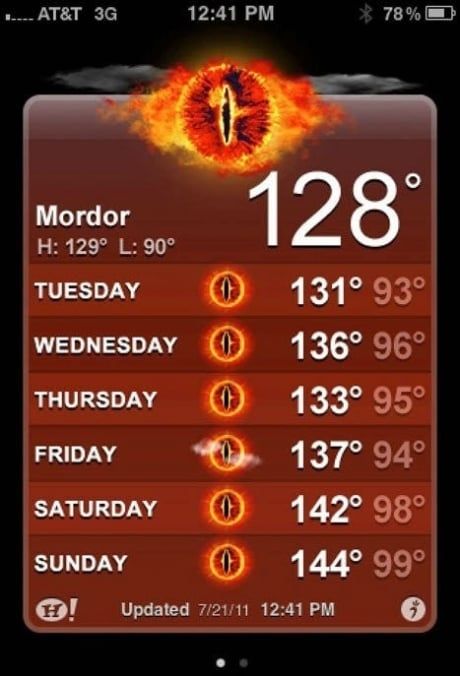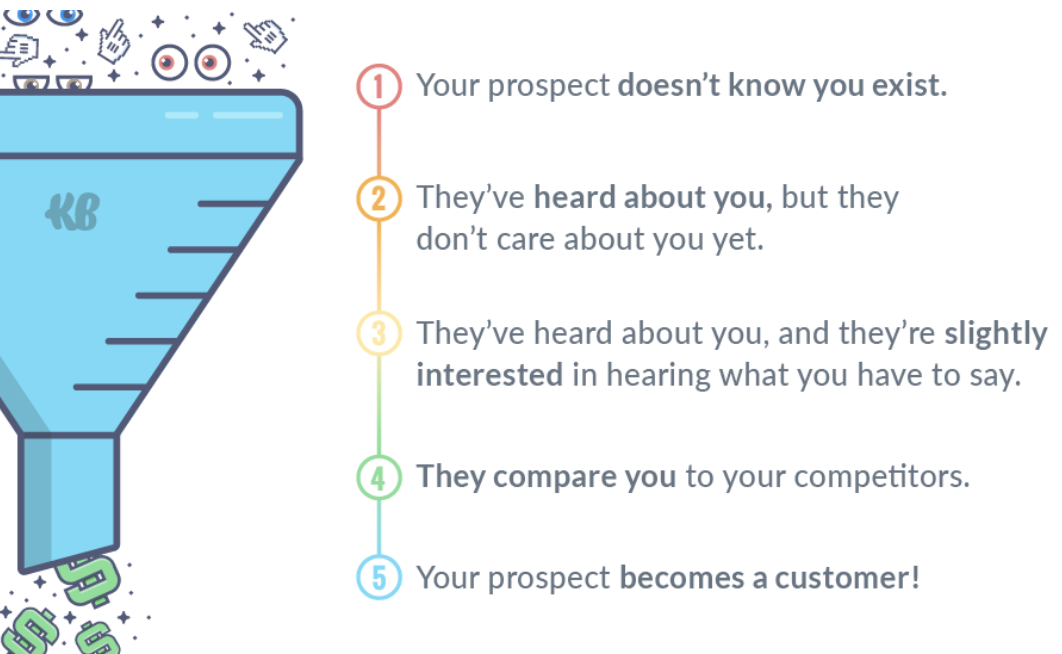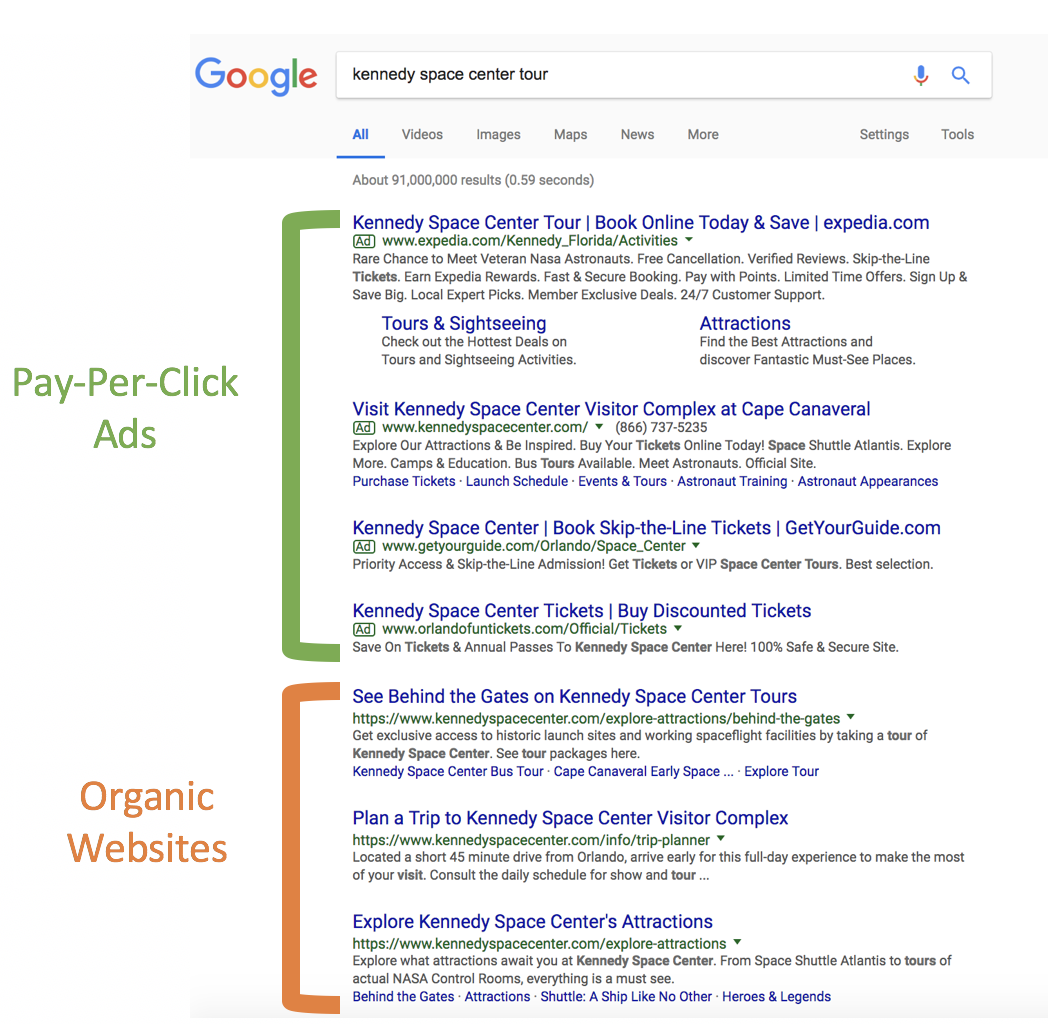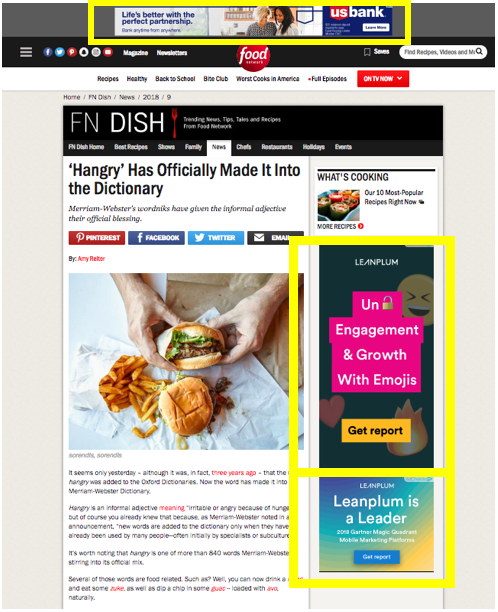When starting out on your PPC journey, you’ll fall into the search versus display network debate when deciding where to allocate your time and money. But not to worry, you don’t have to choose one over the other, you can reap the benefits of both. Putting together a strategy to tackle two very different networks will help give you an edge over your competitors who don’t understand the two networks.
So here’s a tour of the advantages of both The Search and Display Network so you can build a strategy with the proper understanding of the strengths each offers.

Get brand new Google ad strategies straight to your inbox every week. 23,739 people already are!
Where to find these networks
So let’s say you were to take a spaceship, just like the one on our Klientboost homepage, into the vast PPC Universe. You’d encounter a plethora of galaxies all serving as different PPC platforms. Some galaxies are search engines, some are social media platforms, and others are marketplace/directory platforms. You’d find The Search and Display Network planets in only the search engine galaxies. These include platforms like Google, Bing, and Yahoo Gemini.
Google has been the Hercules of all the search engine networks for some time, averaging a net share of 79.15% from 2017 to today, so you’ll most likely see Search and Display associated with Google specifically.

Differences in appearance
Let’s first cover the difference in appearance between the two networks to give us a little background.
The Search Network
The Search Network is a group of related websites and apps where an advertiser’s ads can appear. A user will type in a search query into the search bar to prompt the search engine results page showing all the related websites.
There are spots designated for ads at the top and bottom of the page while the organic websites are in between. Because Google is essentially an ad auction, bidding on keywords that match with the users search queries will give your business’s ads more of a chance to be seen in these designated ad spots.
Now, there are a lot of different factors that go into whether or not your ad will show on a results page. Just because you place a high bid for a particular keyword will not ensure that your ad will be shown in the top spots... or at all. Having a good quality score will give your ads a better chance of appearing at a high position on the page. But that’s a whole other ballgame for a different time.
The Display Network
The Display Network will allow you to reach out to audiences while they’re browsing other websites, partner sites, mobile sites, and apps. Let’s see if any of this rings a bell.
You decide to read an article on the Food Network website about how the word “hangry” has now been added to the dictionary, when you spot a US Bank ad at the top of the page. What’s funny is that you were researching banks yesterday in hopes of signing up for a new credit card. It’s that feeling that you’re now being stalked by the very websites that you were researching.
Well that’s because you are.
Display Network targeting allows advertisers to strategically show text ads, image ads, video ads etc... to a custom created audience to increase the likelihood of conversion. For example, you can create an audience of everyone who visited the “sign up” page from your Search Networks ads in order to remarket to them within the Display Network later on.
Advantages to search
Alright let’s finally address why you’re here, to get a good understanding of the benefits of advertising in each of these networks. It's also important to discuss some of the disadvantages to recognize each network’s shortcomings. Can’t have the good without the bad, am I right?
Let’s start with the positives.
High intent
The most important aspect of Search is intent.
This means that your ads are only being triggered and are showing for people who are searching for what you’re selling or offering. This reactive form of marketing is also called demand harvesting.
For example, someone might type “roof replacement” into Google’s search bar to find out more info about the cost of replacing a roof. Well, it’s likely that that person is searching for that because he/she has the intent to get their roof replaced. You don’t have to be Sherlock Holmes to see that.

Some searches have more commercial intent than others. These can help you gauge how much intent someone has. The four different types of commercial intent include:
- Buy Now Keywords - highest intent
- Examples: “rent a coworking office,” and “ buy a custom drum set.”
- Product Keywords - high intent
- Examples: “Nike air max,” “Best anti-wrinkle cream,” and “carpet installation”
- Information Keywords - medium intent
- Examples: “Need more ram space,” and “how to manage customer reviews”
- Tier-Kicker Keywords - low intent
- Examples: “Free tree removals,” and “management software for free”
Warm & hot traffic
At KlientBoost, we like to diagnose our different keywords by the temperature of traffic they generate: either Ice Cubes or Lava. Buy Now and Product keyword tend to have hotter “lava” based traffic, while Information and Tier-Kicker keywords have cooler “ice cubes.” The great thing about hot traffic is that less persuading needs to take place to get a visitor to convert. So the hotter the better.

As marketers, we see this hot traffic as being at the bottom of the funnel (where you want to be). The Search Network will help in skipping the top funnel processes to where it matters most to your business.

Disadvantages to search
Here a are a few disadvantages to expect from Search Network advertising.
High CPCs & CPAs
Because Pay-Per-Click advertising has become increasingly popular, more bidders are throwing their hats into the ring to try and compete for the most relevant keywords for their business. With the increase of competitors, CPC’s will start to increase as more competitors bid on those same keywords.
The increase in CPC’s also means a possible increase in Cost Per Acquisition CPA’s.
Advantages to Display
Unlike Search, The Display Network doesn’t involve any type if intent or hot traffic. On the contrary, it’s very cold traffic. But knowing how to strategize in Display can bring about positive results across both networks.
It generates demand
Because Display doesn’t involve anyone looking for what you have to offer in particular, they’ll most likely be a little further back in the decision making process. They’ll be looking for information rather than taking a plan of action. But, with Display, you can warm up a cold audience where your display ads help with “demand generation.”
When searchers are researching in Google they’ll usually be reading blog posts and forums to gain information about a topic. Showcasing image or video ads on a page that has some relation to your business can be a step in the right direction to warming up your audience.
For example, let’s say you’re in the business of making custom all-natural dog food. You can decide to use The Display Network to present image ads on relevant blog posts. Blogs about “Finding the Perfect Shelter Dog For You” or “9 First-Time Puppy Owner Tips” are great to introduce the idea of getting your dog all-natural dog food.

It’s important to remember that these pages have nothing to do with the action of buying dog food, so expecting visitors to convert right away is a long-shot. It’s very difficult to get someone to click on your ad, let alone make a purchase. “Buy Custom Dog Food Today” as a CTA is too aggressive for someone who has no interest in buying dog food to begin with.
Offering a less aggressive or a higher funnel offer will give them some value and start to stir some interest. Something like “What is your puppy missing from their diet - Download this Free EBook Today” is a perfect example. This can also get you the lead generation info you need and can be used to remarket to later on.
Low CPCs & CPAs
Another positive is that CPC’s are relatively cheap. Conversions that come from Display will have a lower CPA than those that come from Search, even with high impression volume.
Disadvantages to Display
Most of these disadvantages were addressed in the advantages section, but keep in mind that the success of Display efforts rely on your execution.
Low intent
As already discussed, The Display Network isn’t where you’re going to find high intent. This could potentially bring about low quality searches, so presenting non-threatening, higher funnel ads can help with appealing to the audiences that are seeking only information.
Cold traffic
Also previously discussed, this cold traffic will place audiences at the top of the funnel. At that point, they don’t really know or care about your business. So, it’s up to you and your ads to try and educate them into being more interested than before.
Low Click-through rate
High impressions aren’t always a good thing. Even though The Google Display Network reaches 92% of all internet users, it’s not always the right type of visitors who are clicking on your ads.
Search versus Display Network: por qué no los dos?
So there you have it!
We’ve come to the end of our journey into the Search and Display worlds. I hope this post helped in giving you a better understanding of the advantages of both networks.
Truth is, advertising in both networks is always a good idea. Most advertisers will give up at the first sign(s) of low performance. Remember that this industry is full of trials and errors, so don’t give up. Knowing how you can use each network’s strengths and weaknesses to your advantage can make all the difference in the success of your advertising campaigns.
If you want more help understanding either of the two networks, get access to our KlientBoost Master PPC Academy for much more into Search and Display Marketing. Or better yet, get a proposal from the experts by clicking the button below.

